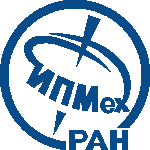
|
ИСТИНА |
Войти в систему Регистрация |
ИПМех РАН |
||
Quantitative analysis of self-potential anomalies in archaeological sites of Israel: an overviewстатья
Статья опубликована в журнале из списка Web of Science и/или Scopus
Дата последнего поиска статьи во внешних источниках: 8 декабря 2021 г.
- Автор: Eppelbaum Lev V.
- Журнал: Environmental Earth Sciences
- Том: 79
- Номер: 15
- Год издания: 2020
- Издательство: Springer Verlag
- Местоположение издательства: Germany
- Первая страница: 1
- Последняя страница: 15
- DOI: 10.1007/s12665-020-09117-w
- Аннотация: Self-potential (SP) method is one of the most non-expensive and unsophisticated geophysical methods. However, its application limits the absence of reliable interpreting methodology, first for the complex geological–environmental conditions. The typical disturbances appearing in the SP method and ways for their removal (elimination) are discussed. Some brief review of the available interpretation methods indicates their insufficient effectivity, especially for complex environments. For the magnetic method of geophysical prospecting, special quantitative procedures applicable under non-trivial environments(oblique polarization, rugged relief, and unknown level of the normal field) have been recently developed. The performed analysis allowed to reveal some essential common peculiarities between the magnetic and SP fields. These common aspects make it possible to apply the advanced procedures developed in magnetic prospecting to the SP method. Besides the reliable determination of the depth of the anomalous target, these methodologies enable to calculation of the polarization effect and corrections for the non-horizontal SP observations. For classification of the SP anomalies, is supposed to employ a new parameter—‘self-potential moment’. These procedures (improved modifications of characteristic point and tangent techniques) have been successfully tested on SP models and employed in real situations in various archaeological sites in Israel. The present paper generalizesthe earlier performed studies. The obtained results indicate the practical importance of the developed methodology.
- Добавил в систему: Лев Виленович Эппельбаум